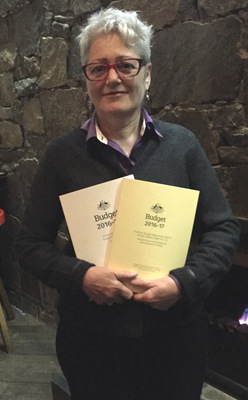By ALANA MITCHELSON
THE Federal Budget is a missed opportunity to “provide fairness” for five million residents of fast-growing outer suburbs, according to a key advocacy group.
While commitments for road and rail projects were welcomed, National Growth Areas Alliance (NGAA) executive officer Ruth Spielman said the budget had underestimated the potential of outer growth suburbs.
“The Federal Government is talking about 30-minute cities, but that remains beyond the reach of outer growth suburbs and that will continue to be the case, unless there is a more serious financial commitment,” National Growth Areas Alliance (NGAA) executive officer Ruth Spielman said.
“At the moment, residents in our areas have congested roads, poor public transport and inadequate access to health facilities. That means that for our communities, they’re more like 90-minute cities.
“We need a substantial commitment to address these massive infrastructure problems, which represent a policy failure by successive governments.“
An NGAA spokesperson said there was little detail in the budget on the Government’s Smart Cities Plan, which was announced last Friday.
Shadow Minister for Cities Anthony Albanese said the Federal Budget was “disappointing” for those who lived in outer suburbs such as Pakenham.
“There’s no funding for major projects and the fact that Victoria is receiving nine per cent of ongoing infrastructure investments from the Commonwealth despite having one in four of the national population is outrageous,“ Mr Albanese said.
“The Pakenham-Cardinia community deserve a government that takes action to improve the liveability of our outer suburbs.”
SGS Economics and Planning research shows that to catch up with the infrastructure backlog in outer growth areas and keep up with the expected growth, $5 billion is needed each year over the next 15 years.
Assistant Minister for Cities Angus Taylor said the 2016 budget would deliver jobs and growth, while balancing the budget and reducing the burden of long-term debt.
“The Smart Cities Plan sets out the government’s plan to strengthen our cities – this includes outer suburban areas. Through City Deals, the Government will co-ordinate action, investment and reforms that deliver jobs, housing, better transport and a clean environment,” Mr Taylor said.
“We’ve got to do better than the current situation where hundreds of thousands of people are in long commutes every day, because planning has failed to build homes closer to jobs and improve urban amenity. These are our crucial goals.
“Outer suburban areas are as big a focus of the Smart Cities Plan as inner suburbs and regional cities. I am excited about the potential of suburban areas to crack open the jobs clustering in our inner CBDs, which has been a feature of the development of our cities in recent decades. We need more job clusters in the suburbs.
“The 2016 Budget also provides for ongoing investment in critical infrastructure and regional development to reduce congestion. It includes more than $33 billion over the forward estimates, to deliver the critical infrastructure that Australia needs for the future that is generating tens of thousands of jobs and easing congestion in our cities.”







